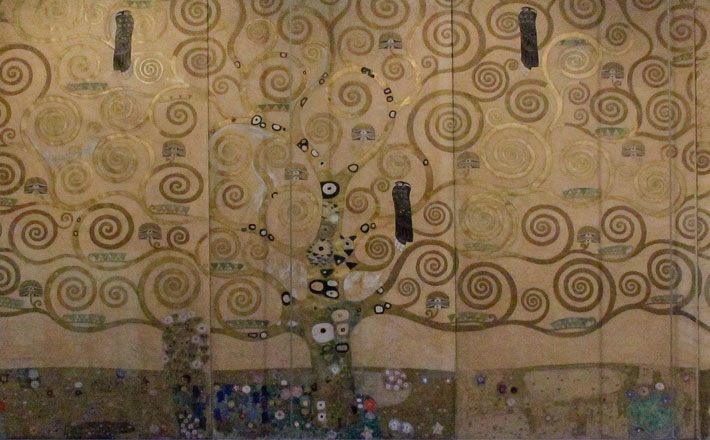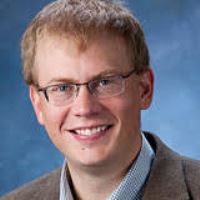Commentary on Revelation 21:10, 22—22:5
The view of the future offered by John of Patmos is beautiful.
The lectionary skips much of the detail, but the New Jerusalem is full of a variety of precious stone and is of impressive scope. This text is one of the primary influences on Christianity’s view of heaven, a place of beauty, peace, and perpetual light that emanates from the lamb.
In recent decades, as our society has become increasingly aware of our ecological crisis, scholars who study the bible have turned their attention to how the Bible has shaped our treatment of the environment. The field of “ecological hermeneutics” asks us to read the Bible in light of our environmental crisis. The vision of the new heaven and the new earth in Revelation is a fascinating text when read through an ecological lens.
For starters, many people, particularly evangelical Christians — those who read Revelation as a literal script for the end of the world — use the new heaven and new earth as an excuse not to care for the environment. Pastor Mark Driscoll is quoted as saying: “I know who made the environment. He’s coming back and he’s going to burn it all up. So yes, I drive an SUV.” This is obviously a drastic statement, but there are probably a good number of people today whose literal reading of Revelation 21 provides just cause not to care about the natural environment.
Although we may recoil from Driscoll’s harsh comments, the exegetical details of Revelation 21 – 22 present the reader with ecological problems. The first two come from earlier in chapter 21, which lies outside our particular text, but they do form a backdrop and introduction. The beginning of chapter 21 contrasts sharply with the end of chapter 20, where Death and Hades are thrown, along with the wicked, into the lake of fire. Once this is accomplished, a new heaven and a new earth descend, for the first heaven and earth had passed away (Revelation 21:1). Then we learn: “the sea was no more.” As someone who has lived most of his life in the central United States, the idea of a lost sea pains me. The sea fuels the imagination and provides a powerful metaphorical resource. More importantly, the sea nurtured early life on earth. For John of Patmos, the end of the sea marks an end to chaos. Eliminating the sea removes the abode of the beast which arose from it in chapter 13, a recapitulation of many sea monsters from the Old Testament, such as that in Daniel 7. In the context of Revelation’s ancient mythology, a sea-less reality makes some sense, but in our modern context, a planet without the sea would make biological processes impossible and weather patterns stagnant. Without the sea there would be no life. The image presented at the beginning of Revelation 21 is not a biologically viable world.
Another problematic text arises in Revelation 21:5. The one seated on the throne announces: “See, I am making all things new” (NRSV). Another possible translation of this verse would be: “See, I make all new things.” Scholars who read with an ecological lens argue strongly for the former reading, the one adopted by the NRSV. It suggests that there is some continuity between the old and the new, and thus it might create a crack into which some ecologically sensitive moral action might seep. While I completely agree with the sentiment behind such a translation, I’m not convinced that John intends such continuity. This new heaven and new earth seem awfully new to me. And if they are, it raises an eschatological problem about care for the planet.
The bulk of the text for this week is a description of the new heaven and new earth. What we find is that the vision is exclusively urban. The future for the righteous is to live in a city, one with 12 gates and built with myriad precious stones. There is one river, and the tree of life that somehow exists on both sides. The tree provides twelve kinds of fruit and its leaves are for the healing of the nations. We are told later that the dogs and wicked are to stay outside the city (Revelation 22:15). This is an urban future, devoid of wilderness, forests, and landscapes. (This ending contrasts with the ending of another ancient apocalyptic text, the Book of Watchers, whose future envisions vast, uncultivated forests and wilderness.)
Finally, the celestial phenomena of our universe are also rendered irrelevant in this new reality. The city does not need a sun or a moon because God is its light, and the lamb is the lamp that shines. Indeed, it will never be night, because this light shines constantly and eternally. This image has no basis in astronomical and physical understandings of how the universe works.
I am being unfair. Of course the Bible does not depict an apocalyptic, eschatological future that is in accordance with the knowledge of modern science. Even more obviously, we are not meant to take these chapters as a literal prediction of how the future will unfold. Nevertheless, these texts pose a problem to modern interpreters who want to study the Bible and its crossover importance with ecology.
From its beginning, Christianity has been beset with an eschatological problem. How do we reconcile a determined and unrealistic future with the need for ethical action in the present? Pope Francis, in his encyclical Laudato Si, struggles with this. In the final section, titled “Beyond the Sun” he, for the first time in the whole work, turns to eschatology and specifically cites Revelation 21: “Even now we are journeying towards the Sabbath of eternity, the new Jerusalem, towards our common home in heaven. Jesus says: ‘I make all things new.’” But a treatise such as this, meant to engender action, can’t leave things there. He adds a final section (244), that starts: “In the meantime, we come together to take charge of this home which has been entrusted to us … ” In some ways, what Francis seems to suggest is we ought not be too encumbered with eschatology. Leave that to God. How God decides to create the future does not remove the need to nurture God’s creation in the present.


May 1, 2016